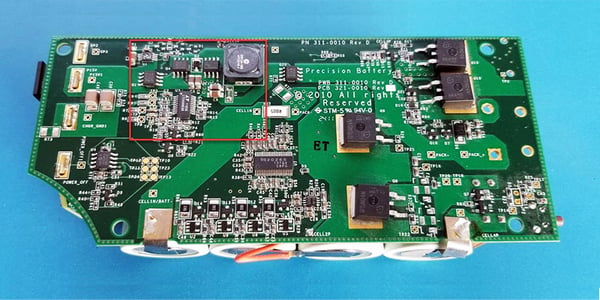When deciding on the types of power to supply equipment requiring high performance, rechargeable batteries are often chosen for several reasons. With rechargeable batteries, users can obtain longer device performance and consistent power. In addition, rechargeable batteries are ideal for devices that are lightweight, such as mobile applications. These devices may have a battery pack that can be taken from off the device, such as the ones on power tools, and placed into a charger that connects to a wall outlet.
Yet, other types of batteries cannot be removed. Found in devices such as phones, embedded batteries are placed permanently into the device. The embedded batteries are provided with additional protection from the device itself because there is no enclosure lid. Instead, the battery is often buried deep into the device. Due to not being able to take out the batteries to recharge them in an exterior charger, embedded batteries and other rechargeable battery packs will come with embedded battery chargers.
Embedded Battery Chargers Included on Circuit Boards
An embedded battery charger is inside the battery pack; it consists of an integrated circuit (IC) placed within the power path to the battery pack that then leads to the system. In addition to recharging the batteries, embedded chargers also provide system power as they provide dynamic power path management (DPPM) to the device, as well as input-voltage dynamic power management (DPM) for when devices will be charged through other devices that have USB port attachments.
The function of an embedded charger is the same as an external charger. It will provide initialization through a self-test and cell detection. Then it will provide the charge to the rechargeable battery based on the battery's chemistry and charging algorithm.

Embedded charger outlined in battery pack PCBA.
Battery Chemistries with Embedded Chargers
Embedded chargers can be used with nickel-based and lithium-based batteries. Since it is included with the specific type of battery chemistry, the embedded charger ensures that the pack is charged correctly.
For NiCd and NiMH chemistries, the chargers can provide fast charging techniques before terminating the charge when reaching the peak (for NiMH) or right after reaching the peak (for NiCd) when the voltage begins to decline. An optional trickle charge may also be provided for NiCd chemistries.
For lithium-ion rechargeable batteries, a fast-charging procedure can also be provided with a regulated charging voltage as it reaches a maximum rate limit. As the voltage rises, the current will start to taper off to provide a float charge. An optional top-off charge to provide the battery with a power boost to reach its maximum charge level may also be provided for all battery chemistries. An embedded charger for lithium-ion batteries may come as a linear charger, pulse charger, or as a switch-mode charger based on the application.
A linear charger is a simple design usually used for smaller applications or for batteries that require less than 1.5A charge currents, such as hearing aids and smart watches. These chargers don't take up a lot of the circuit board's space as they use a pass MOSFET transistor to drop the power from the AC adapter to the battery's voltage. One disadvantage to this type of charger is that it does experience high power dissipation.
A switch-mode (or switching) charger uses a step-down converter to bring the AC power down to the voltage of the battery. It is used for larger batteries and when fast charging is desired. It has lower power dissipation yet has a complex design as it requires more components to offer higher efficiency. With the increase in components, the weight will be increased for the battery pack as this can be an issue for some applications that need to be lightweight.
A pulse charger works by combining advantages from both a linear charger and a switch-mode charger. The pass transistor remains on when the battery's voltage is low until reaching its regulated voltage. Then the charger switches to pulses for the input current until it comes to the voltage limit. Power dissipation is kept low while the pulse charger comes at a smaller size than the switching charger.
Advantages of Embedded Chargers
Due to the different types of embedded chargers that are available, they offer increased battery life to the cells no matter what the environmental conditions will be for the application. The batteries will not require an external charger, which cuts down on the amount of equipment needed by the end user. An embedded charger can also charge batteries through varying power sources. The device can be plugged into a wall outlet using a wall brick, a car cigarette lighter using an adaptor, or even into a USB port on a computer or laptop that allows for power sharing with the other device.
Another unique advantage is that the same product can use different battery chemistries, as the battery pack will always have the correct charger. A customer could switch from the product using a NiMH rechargeable battery to the same product with a lithium-ion rechargeable battery while knowing the embedded charger in each battery pack will provide the correct current and voltage. The use of an incorrect external charger will never become an issue. Since the charger was custom designed for the specific characteristics and power demands of the battery, the charger can provide a higher level of performance for the battery that is then applied to the application.
Disadvantages to Embedded Chargers
Increased design and manufacturing costs will always be present when selecting an embedded charger versus an off-the-shelf external charger. The costs of the embedded charger will be based on the type of charger that is created, as linear chargers with fewer components will typically cost lower than switching chargers or pulse chargers that require additional parts. Battery pack manufacturers will have different costs based on how they design their battery packs and chargers.
In addition, the type of customized products that will be utilized will also play a role, as we can use products from companies such as Texas Instruments, Analog Devices, Microchip, Seiko, and many others to create the custom charger. Another factor will be the rechargeable battery's cost per watt hours ($/Wh) as the type of battery chemistry will dictate the costs. For example, a NiMH rechargeable battery will have a cost of $1.5 - $3.0 while a lithium-ion battery will have a cost of $2.5 -$3.5.
Another complicated problem with embedded chargers is the amount of internal heat that is generated near the cells. If there is not enough surface area to allow space for the heat to discharge from the cells, the higher temperatures will cause the chemical reactions in the battery's cells to be increased. This issue causes the battery to age faster.
Lastly, when the battery reaches the end of its life, then it will have to be entirely discarded. So, the embedded charger will be discarded as well even though the circuitry for the charger is still functional.
Deciding on Embedded or External Chargers
When it comes to picking out the charger for your custom battery pack, there are several considerations that will need to be evaluated. The type of battery chemistry, the size of the battery, the number of batteries required and how the application will function will play important roles. In addition, internal and external environmental conditions will also play a factor.
Extreme exterior temperatures may cause too much heat to be absorbed into the battery pack. This issue will be compounded by the amount of heat that will be present from an embedded charger which could cause damage to the circuit board. Another factor is electromagnetic interference (EMI). Certain chargers can create EMI when in operation, such as switch-mode chargers, that can cause interference with other components on the circuit board. The output of a switch-mode charger can also cause radiation that could impact how the nearby circuitry performs.
Figuring out how the charger will impact the battery run times is also vital. Battery manufacturing varies between companies even when the batteries are the same type. Charging these batteries in the same manner using an external, off-the-shelf charger can lead to the batteries being overcharged. The cell charge voltage limit for a lithium-ion battery from one manufacturer may be a 4.1V/cell charge while another manufacturer will develop batteries with a 4.2V/cell charge. However, the end user may decide to place on an external charger with a 4.2V/cell charge, which will cause issues for batteries that need lower charge rates.
On the other hand, undercharging the batteries can cause inefficient run times for the battery. An external charger with a 4.1V/cell charge may be used for a battery requiring a 4.2V cell charge. This will result in a battery pack that will consistently run out of power more frequently as the device will not operate at its optimal level.
Also consider how the battery will be charged in the device and whether the battery pack will be removable, especially with mobile devices used in varying locations. If the product can be charged through other devices using ports or USB connections, then the embedded option will be more suitable for the application.
Summary
Whether you decide on an embedded charger or an external charger, proper matching to the battery pack will be essential. Obtaining both products from the same manufacturer, instead of using different companies, can ensure that the charger's algorithm will be designed to match the power needs of the application and the recharging requirements of the custom battery pack. Then you can consider whether you want the end user to have control over which external charger will be used for the battery, or whether that control will be reserved to the battery pack itself by using an embedded charger design.
Key Takeaways
- Integrated charging improves convenience and compatibility: Embedded chargers remove the need for external chargers and ensure the charging algorithm is tailored to the specific battery chemistry, reducing risks of overcharging, undercharging, or mismatch.
- Supports multiple chemistries and environments: Embedded chargers work with both nickel-based and lithium-based chemistries, offering features such as fast charging, trickle charging, or top-off charging, and can adapt to different power sources like wall outlets, car adapters, or USB ports.
- Design complexity and cost are higher: Developing embedded chargers adds design and manufacturing expenses, especially for advanced switch-mode or pulse chargers. Costs also vary based on chemistry ($/Wh) and whether custom ICs from suppliers like Texas Instruments or Analog Devices are required.
- Thermal management is a challenge: Heat generated inside the pack from the embedded charger can accelerate battery aging and damage cells if not properly dissipated. Designers must ensure enough space and surface area to prevent overheating.
- End-of-life replacement increases waste: Once the battery reaches the end of its cycle life, the charger, although still functional, is discarded with it. This creates higher lifecycle costs compared to reusable external chargers.
















